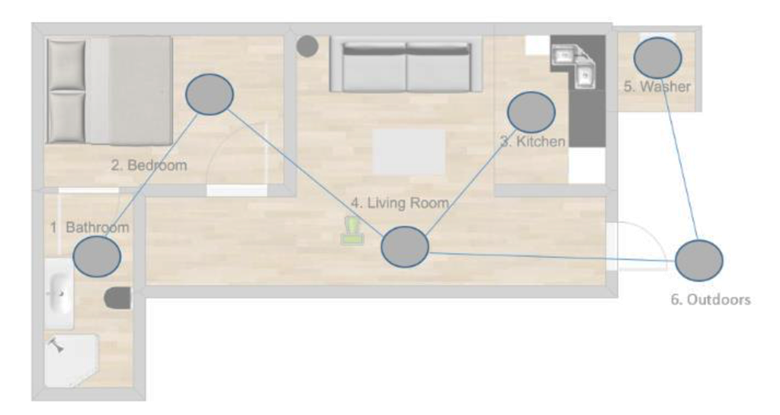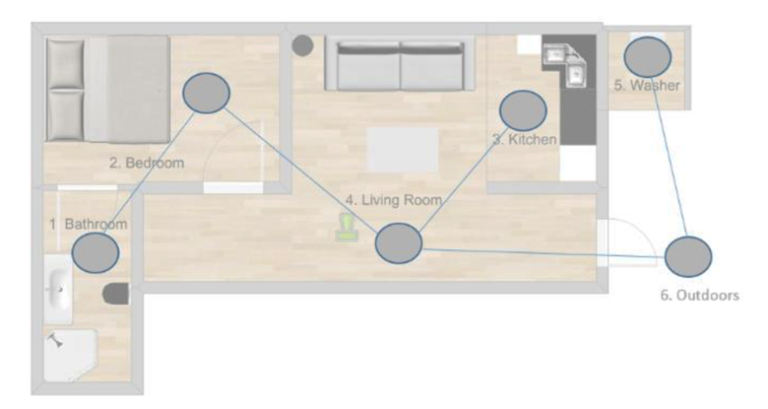
An aging and more sedentary population requires interventions aimed at monitoring physical activity, particularly within the home. This research uses simulation, optimization, and regression analyses to assess the feasibility of using a small number of sensors to track movement and infer physical activity levels of older adults. Based on activity data from the American Time Use Survey and assisted living apartment layouts, we determined that using three to four doorway sensors can be used to effectively capture a sufficient amount of movements in order to estimate activity. The research also identified preferred approaches for assigning sensor locations, evaluated the error magnitude inherent in the approach, and developed a methodology to identify which apartment layouts would be best suited for these technologies.
Editor’s Comment
Clinical Editor, Steven Schachter, MD
 Home-based sensor systems for monitoring physical activity have been in active development given their potential to enable seniors to live independently, to detect falls, and to assist in monitoring patients recently discharged from the hospital, those undergoing in-home physical therapy or those whose activities of daily living can be compromised by conditions such as congestive heart failure, dementia, and depression.
Home-based sensor systems for monitoring physical activity have been in active development given their potential to enable seniors to live independently, to detect falls, and to assist in monitoring patients recently discharged from the hospital, those undergoing in-home physical therapy or those whose activities of daily living can be compromised by conditions such as congestive heart failure, dementia, and depression.
To further inform the development and implementation of passive home-based surveillance systems, Nambiar and colleagues used simulation and optimization techniques to design the placement of a small number of sensors in an assisted living apartment and demonstrated that it could optimally collect movement data for physical activity monitoring. This approach should be further explored, as proposed by the authors, to optimize design of passive sensory systems in a variety of home settings, perhaps in combination with wearable sensors, and for its applicability to populations with specific physical or medical characteristics.

